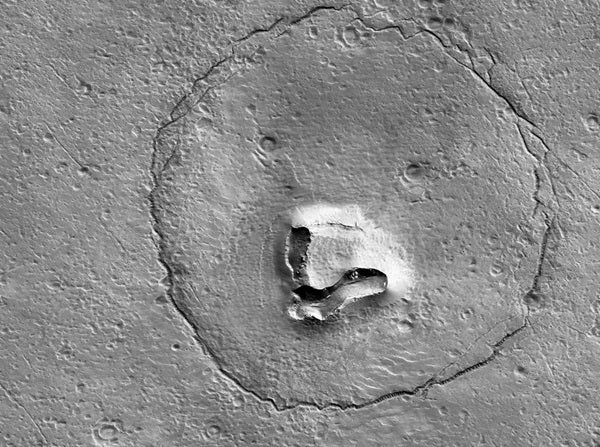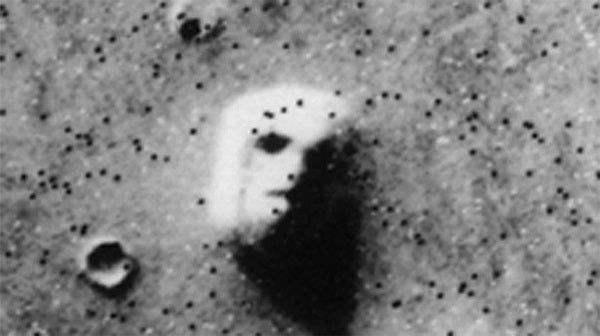NASA’s Mars Reconnaissance Orbiter recently snapped an unexpected — and adorable — image of a martian formation that bears a striking resemblance to the face of a woodland creature more commonly found on Earth: a bear.
The new image was captured Dec. 12 by the High Resolution Imaging Science Experiment (HiRISE) camera on NASA’s Mars Reconnaissance Orbiter (MRO), a spacecraft that’s been taking spectacular images of the Red Planet since it reached Mars in 2006.
The bear’s face is made up of a “V-shaped collapse structure (the nose), two craters (the eyes), and a circular fracture pattern (the head),” according to a blog post from the University of Arizona’s Lunar and Planetary Laboratory, which operates HiRISE. “The circular fracture pattern might be due to the settling of a deposit over a buried impact crater. Maybe the nose is a volcanic or mud vent and the deposit could be lava or mud flows?”
Planetary pareidolia
This mile-wide feature’s resemblance to a bear is purely coincidental. But it serves as a great example of a psychological phenomenon known as pareidolia, which is when the human mind attempts to create a familiar pattern even when no such pattern exists.
Perhaps the best-known example of pareidolia in astronomy is the famous “Man in the Moon,” a result of the visual interplay between dark lunar seas (“maria”) and lighter lunar highlands. Generations of humans have perceived some version of the Man in the Moon looking down at them from above, and many cultures and religions have their own origin stories that attempt to explain how and why the Man in the Moon came to be in the first place.
This also isn’t the first time a spacecraft orbiting Mars has detected a perfect example of pareidolia on the Red Planet, either. In 2018, HiRISE captured a region of Mars that could easily be mistaken for the lovable Muppet character Beaker, who is Dr. Bunsen Honeydew’s long-suffering lab assistant.
Additionally, way back in 1976, NASA’s Viking 1 spacecraft captured an image of a two-mile-wide mesa on Mars that is eerily reminiscent of a human face. This face, located in a region of the Red Planet called Cydonia, was discovered while Viking 1 was circling Mars in search of a suitable landing site for its sister ship, Viking 2. (Images of the feature taken by the Mars Global Surveyor in 2001, however, revealed a much less compelling object.)











